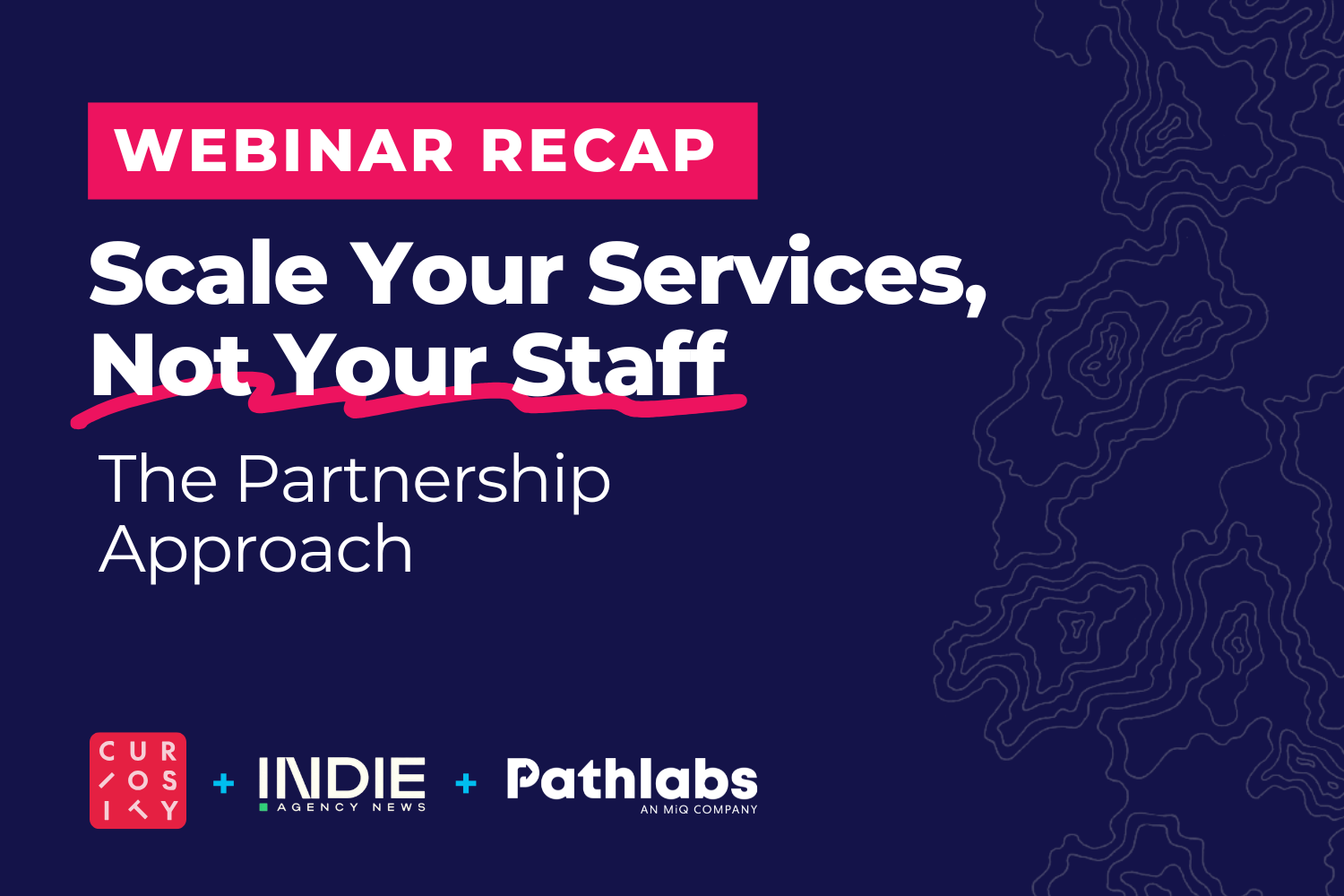Social Media Audience Targeting: Which Channels to Choose?
| Pathlabs Marketing |
| February 23rd, 2024 |
Familiar with audience targeting in digital marketing and advertising?
This is the practice of directing advertisements for a campaign to serve to users who fit a given criteria or appear in a designated audience list.
Audience targeting is vital, as advertising is a paid game, and teams want to ensure their ads appear to the right audiences to drive a better return on ad spend.
Performing audience targeting, however, is a science, especially in paid social media advertising.
In this blog, we discuss social media audience targeting, laying out what it is, how teams perform it, and how to select a paid social channel that best aligns with audience targeting goals.
What Is Social Media Audience Targeting?
Social media audience targeting is a type of audience targeting applicable to paid social. It revolves around directing ads to serve to users fitting given criteria or appearing in an audience list while they engage on a social media platform.
“Remember, paid social advertising is distinct from organic social media marketing, which involves publishing non-paid posts on a brand’s owned social media accounts.
In paid social media advertising, teams execute complex media campaigns, essentially paying to display their ads to social media users in a given audience, many of whom may have yet to engage with the brand.”
How to Perform Audience Targeting for a Paid Social Campaign
How teams perform audience targeting for a paid social campaign is complicated and can take many forms. Yet, it consistently involves two key features:
The team will perform the campaign execution and audience targeting in the corresponding ad management platform for the social media platform on which they plan to run ads, like Meta Ads Manager, LinkedIn Ads, Snapchat Ads Manager, etc.
The team will outline and designate an audience for their campaign to target.
There are several approaches to outlining and designating this target audience, most commonly done through audience building or list uploading.
Some platforms simply allow the team to perform all of this audience building and list uploading when constructing their campaigns right before launch.
Depending on the ad management platform, teams might also be able to build their audiences and upload lists within the platform's audience section beforehand. They will then designate subsequent campaigns to target one of these saved audiences.
Below are some of the most common types of audiences that teams will build and designate for their paid social media campaigns to target.
Custom Audience Lists Built With Social Media Platform Data
Different social media platforms have mass-aggregated user data that enable teams to build custom audiences. When doing so, the team sets audience parameters, including basic demographics like age, gender, and geo. Many platforms even have custom audiences and pre-built segments based on user interests, behaviors, and purchase intentions.
For example, the team can set the audience to consist of female users 18-30 and add the interest segment of users interested in sports and travel, even users shopping for cars or shoes.
Once the campaign launches, the platform will identify and target users who fit these defined parameters and appear in the pre-built audience segments.
First Pary-Data Audiences
Teams can create audiences by importing their first-party data lists into the ad management platform. This data may come from the brand’s CRM platform, website traffic, or another source.
Once imported, the platform matches this data with its internal records; for instance, email lists uploaded to Meta can be matched with user accounts. Then, future campaigns will target users on this list.
Pixel Guided and Custom Sourced Audiences
Platforms like Meta, LinkedIn, and Pinterest support pixel-based audience list building.
When creating an audience for a Facebook campaign, for example, the team can choose to place a pixel on the brand’s site or app. This pixel tracks users and re-identifies them when they engage on social media, adding them to the list and serving them ads.
Teams can build audiences based on sourcing, telling the platform to track and add to a list all the users who performed actions like interacting with the brand’s social media profile page, filling out a form, putting items in a cart, etc. This creates an audience of users segmented by their engagements.
“Advanced targeting based on site or app interaction requires a tagging strategy and implementation to ensure data correctly passes back to the advertising platform.”
Third-Party Data Audiences
Some platforms permit the uploading of third-party data lists into the ad management platform. Like first-party data activation, the platform matches users on the list with those with an account on the social media platform, targeting them with ads. These integrations with popular DMPs are often available by contacting a platform representative.
Lookalike and Actalike Audiences
Teams can create a lookalike/actalike audience by selecting a base audience (custom or first-party) and instructing the platform to target users with similar profiles, expanding reach to potential users who share characteristics with existing audiences.
Why Target Audiences on Social Media?
Social media platforms are attractive for paid ad campaigns and audience targeting due to what we interpret as the ‘perfect storm.’
Massive Audience Reach: Meta alone, encapsulating Facebook, Facebook Messenger, and Instagram, has five billion monthly active users. Other social platforms closely follow suit.
User Opt-In: Users must create an account to use a social media platform at total capacity. By creating an account and subsequently logging in, the user opts in with their email or phone. This allows the platform to link and track the user profile more easily across devices and sessions.
Active Use: In 2023, average user engagement was approximately an hour for TikTok and half an hour for other platforms. Undoubtedly, everybody is spending time on at least one app or social media network.
“With these three factors, teams have a high chance of connecting with their audience via paid ads on at least one social media platform. When doing so, they have enhanced user data tracking, targeting, and data activation capabilities thanks to opt-in. Lastly, the extensive user engagement volume creates a consistent availability of impressions for teams to get their ads in front of relevant eyes.”
Understanding Your Social Media Target Audience
Before any social media audience list-building or targeting can occur, teams must conceive a solid outline of their target audience. This usually comes in the form of an audience buyer persona or profile.
Teams inform these personas by reviewing data from past campaigns, social media posts, form inquiries, customer interviews, etc. Teams may also leverage websites and tools that provide insights for further audience outlining.
Teams should outline a large portion of the following in their audience persona.
Demographic Information
User age group, gender, ethnicity, cultural background, income level, education level, marital status, and family composition.
Interests and Preferences
Topics and themes that captivate users and pertain to the content and products they regularly consume.
Behavior and Online Habits
Behavioral data patterns of the audience, including their purchasing habits, online browsing activities, device preferences, and business loyalty.
“Every campaign must have a target persona, but remember, it really only serves as a jumping-off point for when they build the campaign. Then, as data comes in, they can test different versions of the audience and see what users and attributes are responding the best. They may realize that, looking at the data, there is a type of audience to target that was not originally anticipated.”
Finding the Right Social Media Channel for Your Target Audience
Below are essential questions to consider when assessing which social media platforms to leverage for a campaign and their efficacy in assisting with audience targeting.
Campaign Objective and Audience Alignment
What are the primary goals of the campaigns to be run(awareness, consideration, conversion)? Does the social platform allow teams to set these goals or optimize toward them?
Is there evidence that the campaign target audience is active on this platform, and how likely will it engage new prospects or current customers here?
Are certain audiences more prevalent on this platform, such as younger generations on TikTok or professionals on LinkedIn?
Are there any advertising restrictions for specific categories like healthcare, finance, or politics on this platform?
Targeting Capabilities
Does the platform permit basic audience targeting during campaign setup?
Does the platform offer any advanced audience targeting options?
Custom Audience Builds with Social Meda Platform Data
First-Party Data Activation
Third-Party Data Activation
Pixel List Building and Audience Sourcing
Lookalike and Actalike Audiences
Platform Analytics
What data is available during and after the campaign launch, and does the platform provide more than basic metrics like impressions and clicks?
Audience Engagement
What is the typical level of user engagement on this platform, and does the content consumption pace necessitate more frequent ad impressions?
Are interactive features available for users to engage with ads through likes, comments, or shares?
Ad Placement Options
What are the platform's most popular ad placement options?
Are ads confined to feeds, or can they serve in other areas like marketplaces or stories on the platform?
Ad Format Suitability
What is the most popular ad format or medium available on the platform?
Does the team have the resources to develop quality assets if the platform emphasizes video ad formats or images?
Are there dynamic ad-serving opportunities like on Facebook or Linkedin, requiring multiple creatives and asset iterations?
Budget Considerations
What are the main pricing models on the platform (CPM, CPC), and how does targeting granularity impact bidding prices?
Will investing in this platform spread the overall budget too thin? Why is it worth making an additional paid social investment here?
Machine Learning and Algorithm Dependency
Do the platform's ad-serving mechanisms rely on AI or machine learning? How accurate are they? TikTok, for example, has AI-based ad-serving options.
Data validity
When building and relying on custom audiences provided by the platform, how reliable is this data?
If activating data in the platform, what is the average match rate for the audience? Will the platform pinpoint and activate actual users?
Long-Term Viability
What is the current user adoption rate of the platform, and what are the future forecasts for its usage?
How might regulatory changes or privacy initiatives impact the platform's effectiveness or reputation in the future?
Is the target audience likely to continue using this channel? How Do Media Execution Partners Assist with Social Media Audience Targeting?
How Do Media Execution Partners Assist with Social Media Audience Targeting?
Navigating the complexities of social media audience targeting demands deep expertise. Teams must discern when to employ audience targeting methods like setting basic parameters, leveraging pixel-based or custom audiences, or activating data. Additionally, they must know how to navigate the nuances of social platforms' AI algorithms and which regulatory changes or platform updates to look for.
This task grows exponentially complex for agencies managing numerous campaigns across clients, each requiring tailored audience targeting strategies.
To alleviate this burden, agencies can collaborate with a Media Execution Partner (MEP). MEPs offer specialized workflows, advanced technology access, and, most importantly, a team of trained professionals dedicated to assisting agencies with their media strategies.
These MEP experts are well-equipped and genuinely enthusiastic about advising on audience targeting strategies, stepping in to enable agency teams to focus on broader strategic objectives while ensuring precise and effective targeting in their social media campaigns.
Learn more about how MEPs have helped agencies improve their paid social audience targeting efforts.












